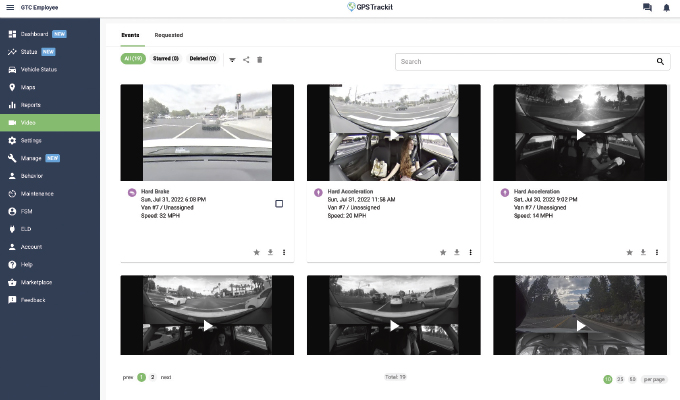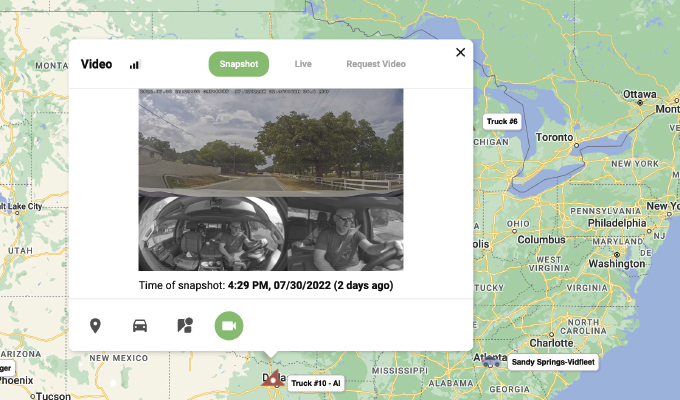A classic management phrase is “What gets measured gets done.” When it comes to variable costs like fuel, nothing could be more true. Without real information about how the trucks in a given fleet are consuming fuel—and why—managers are left to guess about what to do about it.
Since fuel prices have reached near record highs this year, guessing is no longer an option. With high-quality field service management technology, administrators can see exactly how much fuel each truck consumes and use a variety of strategies to increase efficiency. Another huge benefit to taking that step? Fleet management tools provide a host of other cost savings to go with the reduction in fuel costs. Here’s how you can take control of your variable fleet costs with technology.
REAL-TIME DIAGNOSTICS
Fuel is the single biggest variable cost within fleet expenditures, and it’s also one with the most room for improvement. Field service management modules connect to a vehicle’s central diagnostic computer and measure everything from fuel economy to acceleration. With real-time central data dashboards like the ones provided by GPS Trackit, managers can see how their drivers operate trucks and their location in real time.
By monitoring how vehicles are operated and measuring their overall health, managers can promote behavior that increases efficiency and stay ahead of maintenance. Simply keeping tires inflated and fluids fresh can increase fuel economy by 10% fleetwide. Aggressive driving in stop-and-go traffic—hard accelerating and braking—can reduce fuel economy by up to 40%.

TRAIN DRIVERS
All of the information provided by a field service management solution is a powerful motivational tool in the hands of a fleet manager. Emphasizing safety and efficiency indicators such as fuel consumption and aggressive driving gives managers the opportunity to reward top performers—and offer training for those falling short. One Dallas-area field service contractor uses GPS Trackit’s field service management solution and its driver scorecard to rank its 10 crews week to week on metrics ranging from average fuel economy to route adherence. The scoreboard aspect motivated the crews to compete with each other to score highly in the weekly competition—both to “win” and to avoid falling under increased scrutiny with poorer stats.
Rewarding high-performing drivers is also a powerful culture builder and employee development tool. It makes retaining those elite drivers easier in this intensely competitive employment market and is a strong enticement when recruiting potential new hires. Talented employees want to go where their excellence is recognized and rewarded. Considering the average cost to onboard a new hire is more than $4,000, can you afford not to consider such a program?
COMPETITIVE RATES
Bill Rodgers’ DC-area custodial services fleet numbers more than 150 trucks. By installing GPS-enabled monitors in each of his Service Source cabs, he gained real-time information about where every truck was and what it was doing—a critical element in reigning in insurance costs. When the pandemic caused 50 of his trucks to temporarily sit idle, he was able to prove with GPS data that those trucks weren’t moving—and secure thousands of dollars in monthly insurance savings from his carrier. Most carriers also offer a monthly discount for fleets with GPS tracking and two-way video monitoring, since those features can help law enforcement track down a stolen vehicle quickly and see documented evidence of what happened during an incident.

REDUCE INCIDENTS
Why do insurance companies—and field service operators—swear by GPS-enabled two-way monitoring? Organizations with those features in place see an almost 30% reduction in incidents like speeding tickets, collisions, and theft losses. And when incidents do happen, they cost nearly 50% less. The most technologically advanced in-cabin monitors use a driver-facing camera and artificial intelligence to identify potentially distracted behavior and warn drivers as it happens. The outward-facing wide-angle cameras capture the entire context of an incident, which often exonerates the driver and saves fleets from false claims. All of those factors combine to not only reduce accidents because of safer and more conscientious driving, but also reduce insurance costs because of those better metrics and less exposure to false claims.
One company, RG Tree, handles complicated tree removal around power lines, which requires special insurance, auditing, and compliance measures. With GPS Trackit’s fleet management platform, Danny Segura of RG Tree has that information at his fingertips in real time. “We can tell where every truck is and make sure they’re doing what they’re supposed to,” he says. “It mitigates risk and helps me make sure I give the right roles to the right people.”
Increasing efficiency has benefits beyond cost reduction, too. By reducing the amount of wasted fuel from idling and aggressive driving and extending the effective service life of vehicles with conservative driving and meticulous preventive maintenance, fleets leave less of an environmental footprint. That’s an increasingly important differentiator many customers are now considering when they make a purchasing decision.
ABOUT THE AUTHOR
Penelope Rudy has nearly two decades of proven success helping elite brands create, manage, and license digital content while helping grow new lines of business. Penelope is an expert in international business development, brand extension, licensing, and content management. She’s a former senior manager for business development at Condé Nast and runs a content development company based in Easton, Connecticut. Find out more, visit www.gpstrackit.com.




